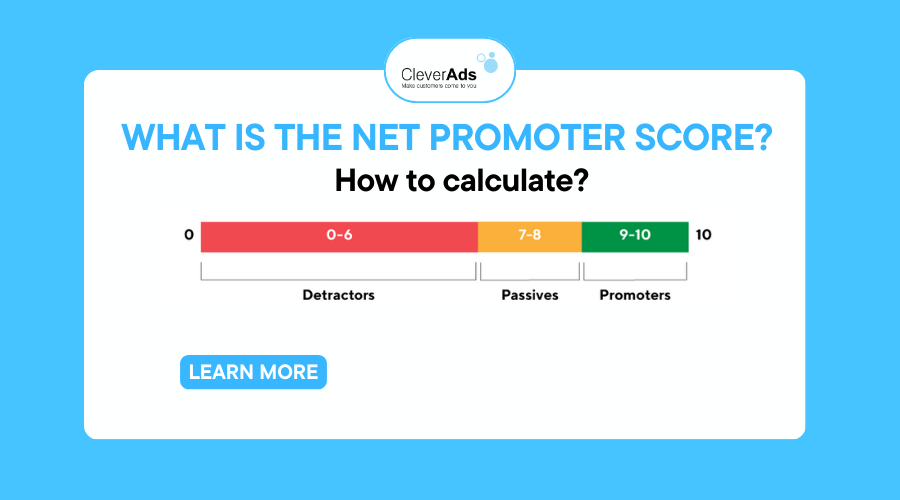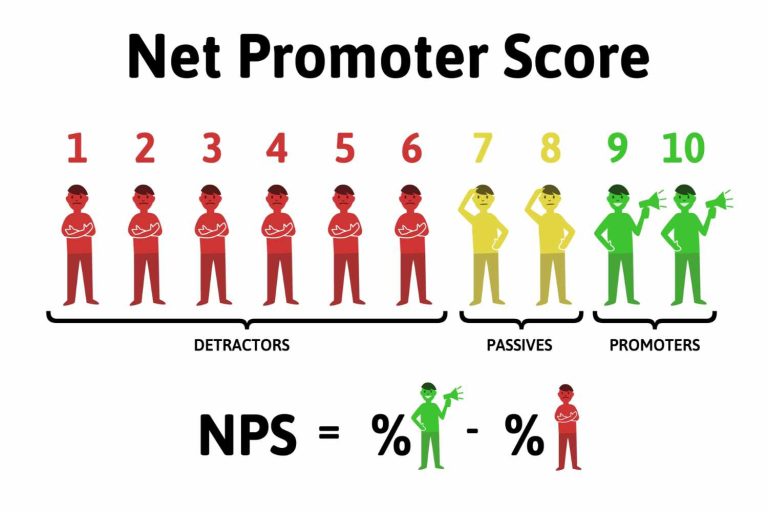What is the net promoter score? How to calculate Net promoter score

Currently, customer satisfaction when experiencing services or products is the top priority of every business. Because this is the most important thing that determines the existence and development of that business, understanding the concept of Net promoter score will help businesses better understand their customers, from which they can plan to improve and attract potential customers.
1. What is the net promoter score?
Net Promoter Score, also abbreviated as NPS®, is a proven method for measuring customer loyalty through direct feedback. For example, businesses can submit this question— “On a scale of 0 to 10, how likely are you to recommend [our product or company]? —at different stages of your journey.
You may be interested: What is social listening? Four reasons why businesses should apply social listening
2. Where does the Net promoter score come from?
Fred Reichheld, a partner at Bain & Company, developed the Net Promoter Score (also known as the NPS score) in 2003. His goal is to provide businesses with a quick survey to determine how well they generate customer satisfaction and loyalty.
3. How to calculate the Net promoter score

The Net Promoter Score can range from -100 (all non-supporters) to 100 (all promoters and supporters). The closer to 100, the better.
Formula to calculate NPS = %Promoters – %Detractor
Businesses will base their subjective views on customer satisfaction metrics, and these scores can be explained:
- 70 and up: Excellent experience
- 50 to 69: Satisfying experience
- 49 or less: Good experience
- Below 0: Poor experience
For example:
Imagine a scenario in which a company surveys its 200 customers using a standard NPS question. Remember that the purpose of NPS is to understand the general psychology of customers, so this question should not be directed at a specific product.
After compiling the responses, 125 respondents favored, 42 were passive, and 33 were against. The first step is to calculate these amounts as percentage values:
- Supporters = ((200 – (42 + 33))/200) x 100 = 62%
- Passive = ((200 – (125 + 33))/200) x 100 = 21%
- Opponents = ((200 – (125 + 42) )/200) x 100 = 16.5%
- Formula to calculate NPS = %Promoters – %Detractor
- The Company’s NPS = 62.5 – 16.5 = 46″
4. Net promoter score groups
What is the net promoter score? Net promoter score groups
When a user is sent a question from the NPS System, they can answer it with a score of 0 to 10. Based on their score, you would place the user in one of three categories:
- Promoters (9 – 10 points) are loyal customers who will try to follow your brand and recommend your products or services.
- Passives (7 – 8 points) may like your product or service. They may mention it in the proper context, but they are unlikely to endorse it as the best available on the market personally.
- Detractors (0 – 6 points) will actively take advantage of any opportunity to discourage people from using your product or service and can negatively impact your overall NPS score.
You may be interested: What is Tourism Marketing? Everything marketers need to know
5. Why should the Net promoter score be measured and monitored?

5.1. Works for organizations of all shapes and sizes
The Net Promoter Score is a great way to understand your customers regardless of your size or industry. Connect with shoppers after their order arrives, identify why customers choose your software over your competitors or get feedback from hotel guests after their stay.
5.2. Detect customers at risk of leaving
Non-advocates are unhappy customers who risk leaving you for a competitor. Periodic Net Advertiser Score surveys give you the feedback you need to improve your experience and monitor the health of your customers to see if your changes are impacting them.a”
5.3. Tap the response you missed
For most companies, feedback comes through a relatively small percentage of people who contact customer support with specific issues. Everyone has a story, and most stories are not told. The Net Promoter Score shows feedback from people you wouldn’t have received.
5.4.Positive word of mouth
Your most sympathetic customers can also be your brand evangelists. Identify your promoters through the Net Promoter Score survey and ask them to rate you on third-party sites or participate in case studies to maintain your reputation and brand support.
You may be interested: Storytelling – The art of telling a story that touches customers’ emotions
6. Conclude
So the article gave us an overview of the Net Promoter Score (NPS) concept. Capturing this metric will help businesses across all industries gather feedback quickly, develop strategies to improve the experience throughout the customer journey, and increase loyalty—their brand and revenue for long-term success.


